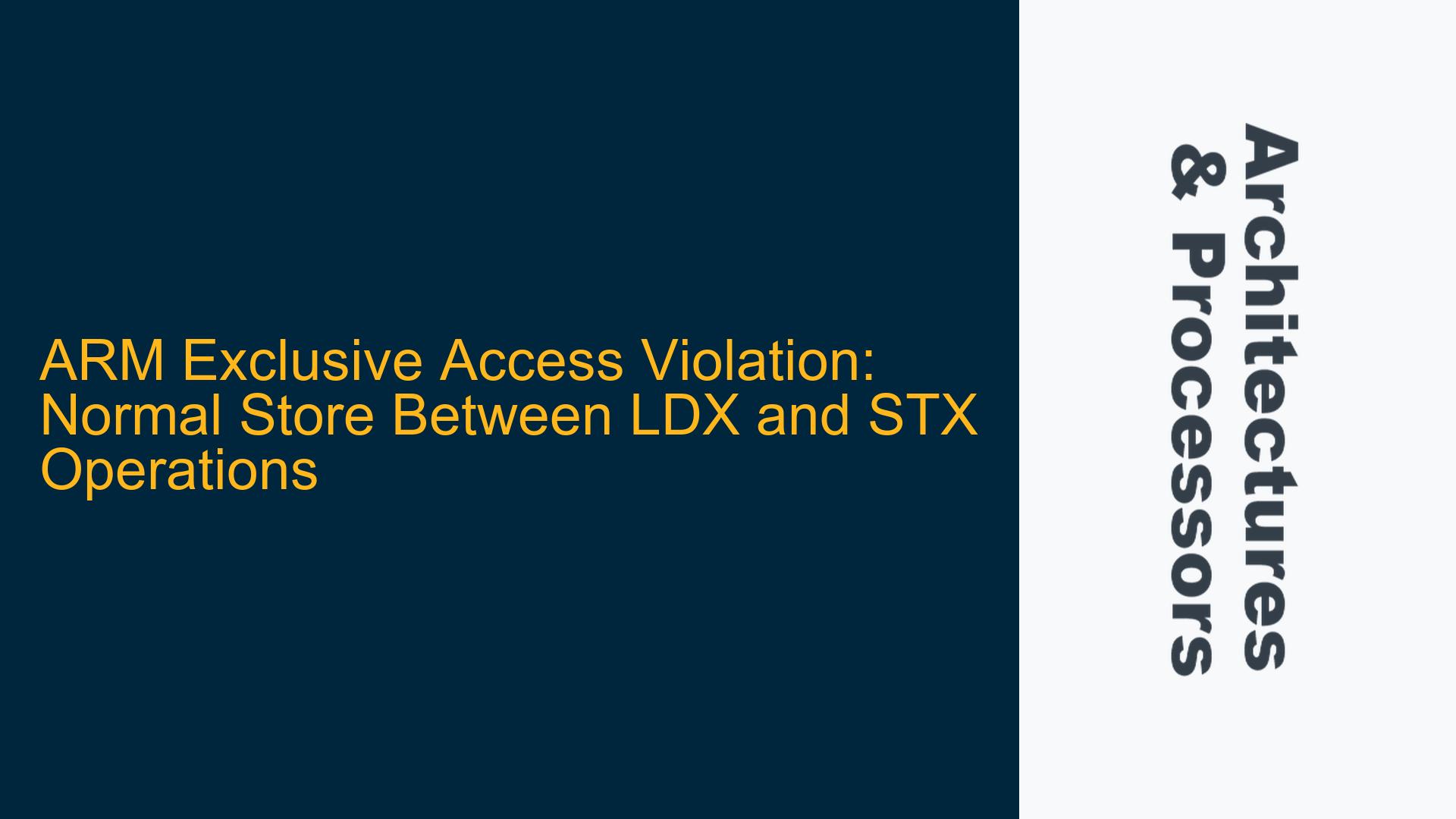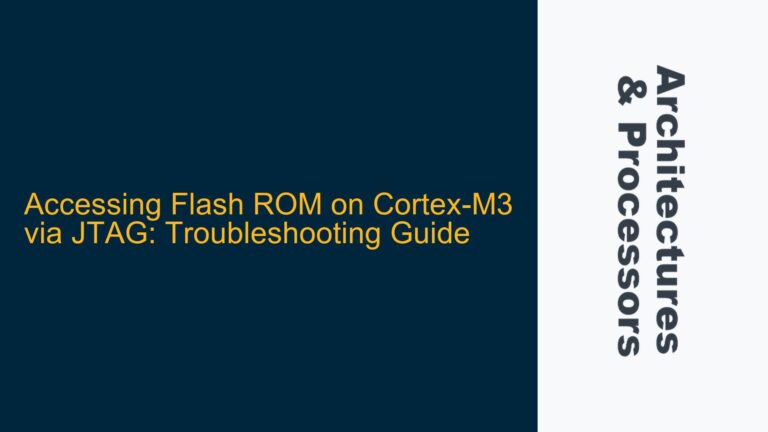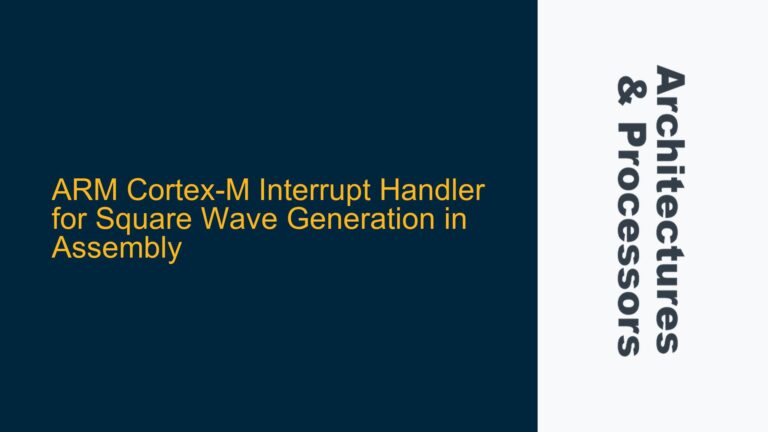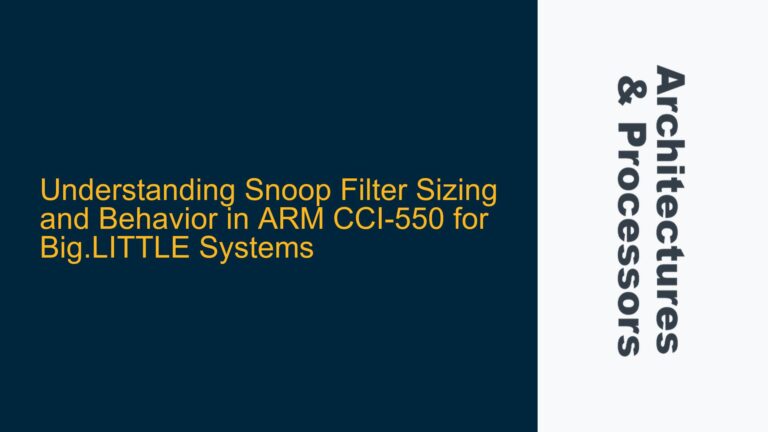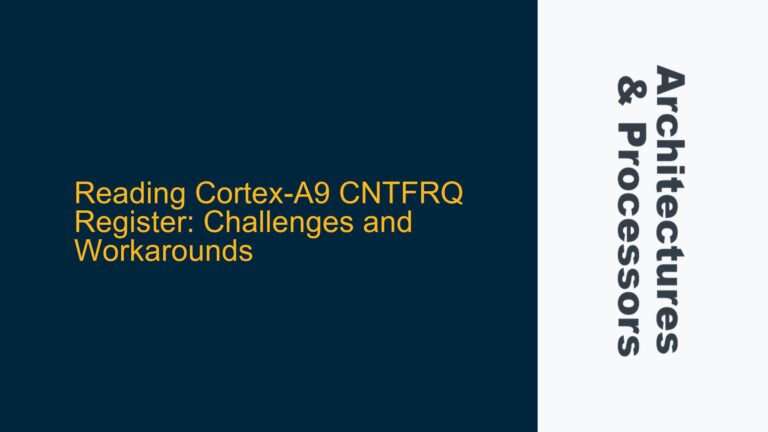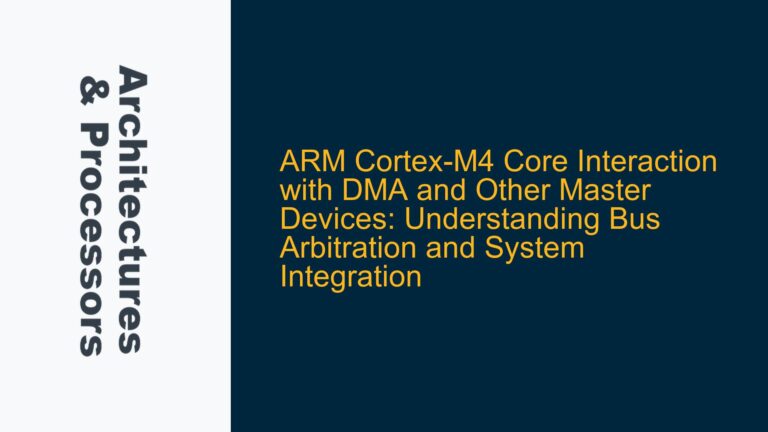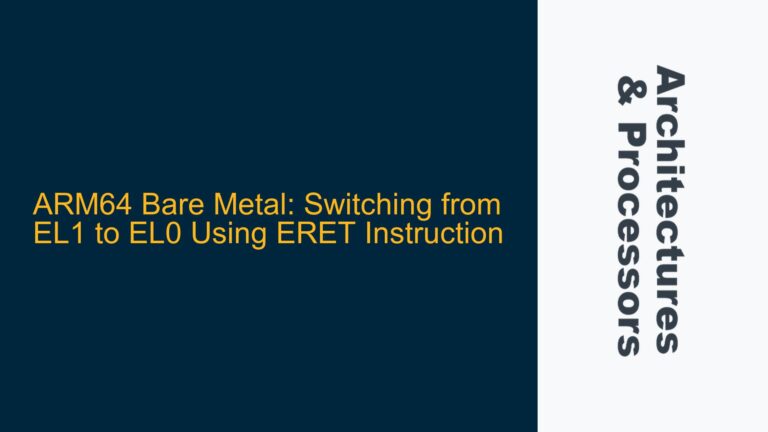ARM Exclusive Access Sequence Disruption by Intermediate Normal Store
In ARM-based systems, exclusive access sequences are critical for implementing atomic operations, such as semaphores and spinlocks. These sequences typically consist of a Load-Exclusive (LDX) instruction followed by a Store-Exclusive (STX) instruction. The LDX instruction marks a memory location for exclusive access, and the STX instruction attempts to store a value to that location only if no other processor or bus master has modified the location in the interim. The ARM architecture provides guarantees for forward progress in such sequences, ensuring that software can rely on these operations for synchronization.
However, the introduction of a normal store operation between the LDX and STX instructions disrupts this sequence. A normal store operation is any memory write that is not an STX instruction. When a normal store occurs between LDX and STX, the state of the local exclusive monitor, which tracks the exclusive access, becomes implementation-defined. This means that the behavior of the exclusive access sequence can vary across different ARM implementations, leading to potential non-deterministic behavior in software that relies on these sequences.
The local exclusive monitor is a hardware mechanism within each processor core that tracks exclusive access requests. When an LDX instruction is executed, the monitor enters the Exclusive Access state and marks the memory address being accessed. The monitor remains in this state until either an STX instruction is executed or the monitor is cleared by some other event, such as a normal store operation. The ARM architecture specifies that the state of the monitor after a normal store operation is implementation-defined, meaning that different ARM cores may handle this situation differently.
This implementation-defined behavior can lead to several issues. For example, if the local monitor is cleared by a normal store operation, the subsequent STX instruction may fail even if no other processor or bus master has modified the memory location. This can cause software to enter an infinite loop, as it may repeatedly attempt the exclusive access sequence without making progress. Additionally, the presence of a normal store operation between LDX and STX can lead to subtle bugs that are difficult to reproduce and diagnose, as the behavior may vary depending on the specific ARM core being used.
Memory Barrier Omission and Cache Invalidation Timing
One of the primary reasons for the disruption of exclusive access sequences by intermediate normal stores is the omission of memory barriers and improper cache invalidation timing. Memory barriers are instructions that enforce ordering constraints on memory operations, ensuring that certain operations complete before others begin. In the context of exclusive access sequences, memory barriers are used to ensure that the LDX and STX instructions are executed in the correct order and that no other memory operations interfere with the sequence.
When a normal store operation is introduced between LDX and STX, the lack of a memory barrier can lead to out-of-order execution, where the normal store operation is executed before the LDX instruction. This can cause the local exclusive monitor to be cleared before the STX instruction is executed, leading to the failure of the exclusive access sequence. Additionally, improper cache invalidation timing can result in the normal store operation modifying the cache line associated with the exclusive access, causing the local monitor to be cleared.
Cache invalidation is the process of removing or updating cached data to ensure consistency with main memory. In ARM systems, cache invalidation is typically performed using cache maintenance operations, such as the Data Cache Clean and Invalidate (DCCIMVAC) instruction. When a normal store operation is performed between LDX and STX, the cache line associated with the exclusive access may be invalidated, causing the local monitor to be cleared. This can occur if the normal store operation modifies the cache line or if a cache maintenance operation is performed between LDX and STX.
The timing of cache invalidation is critical in exclusive access sequences. If a cache invalidation operation is performed too early, it can cause the local monitor to be cleared before the STX instruction is executed. If it is performed too late, it may not prevent other processors or bus masters from modifying the memory location, leading to the failure of the STX instruction. Properly timing cache invalidation operations requires a deep understanding of the ARM architecture and the specific implementation of the local exclusive monitor.
Implementing Data Synchronization Barriers and Cache Management
To address the issues caused by normal store operations between LDX and STX instructions, it is essential to implement data synchronization barriers and proper cache management. Data synchronization barriers (DSBs) are instructions that ensure all memory operations before the barrier are completed before any memory operations after the barrier are executed. In the context of exclusive access sequences, DSBs can be used to ensure that the LDX instruction is executed before any normal store operations and that the STX instruction is executed after all normal store operations.
When implementing DSBs, it is important to consider the specific requirements of the ARM architecture and the local exclusive monitor. For example, the ARMv8 architecture specifies that a DSB instruction must be used after the LDX instruction to ensure that the exclusive access sequence is not disrupted by normal store operations. Additionally, DSBs should be used before the STX instruction to ensure that all normal store operations are completed before the STX instruction is executed.
Proper cache management is also critical for ensuring the correct behavior of exclusive access sequences. Cache maintenance operations, such as cache cleaning and invalidation, should be performed at the appropriate times to ensure that the local exclusive monitor is not cleared prematurely. For example, if a normal store operation modifies a cache line associated with the exclusive access, a cache invalidation operation should be performed before the STX instruction to ensure that the local monitor is not cleared.
In addition to DSBs and cache management, it is important to consider the use of memory barriers in the software implementation of exclusive access sequences. Memory barriers can be used to enforce ordering constraints on memory operations, ensuring that the LDX and STX instructions are executed in the correct order and that no other memory operations interfere with the sequence. For example, the ARMv8 architecture specifies that a memory barrier should be used after the LDX instruction to ensure that the exclusive access sequence is not disrupted by normal store operations.
In summary, the disruption of exclusive access sequences by intermediate normal store operations can be addressed through the implementation of data synchronization barriers, proper cache management, and memory barriers. These techniques ensure that the LDX and STX instructions are executed in the correct order and that the local exclusive monitor is not cleared prematurely. By following these best practices, software developers can ensure the correct behavior of exclusive access sequences on ARM-based systems, regardless of the specific implementation of the local exclusive monitor.
